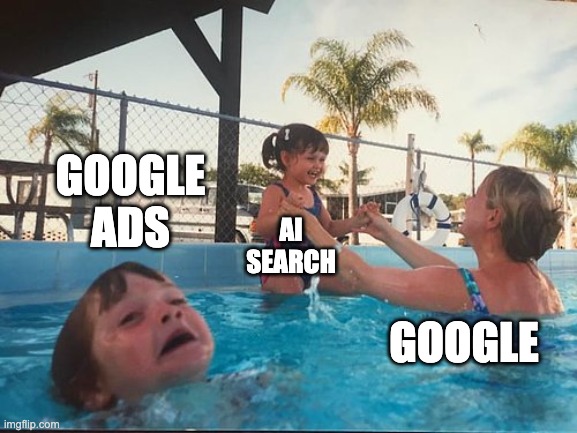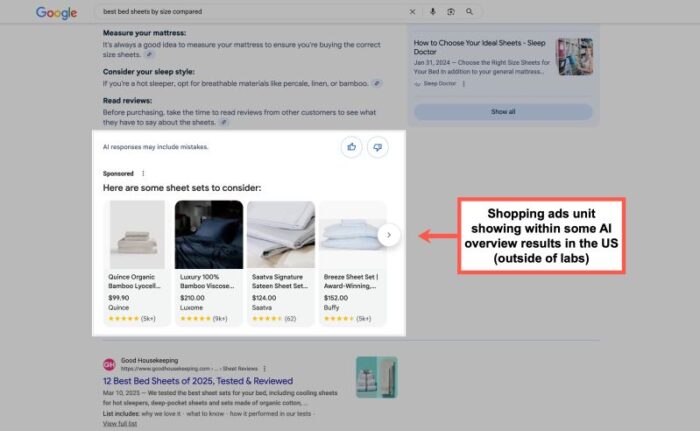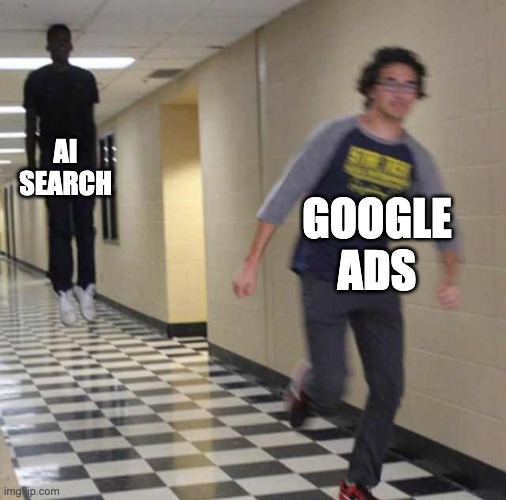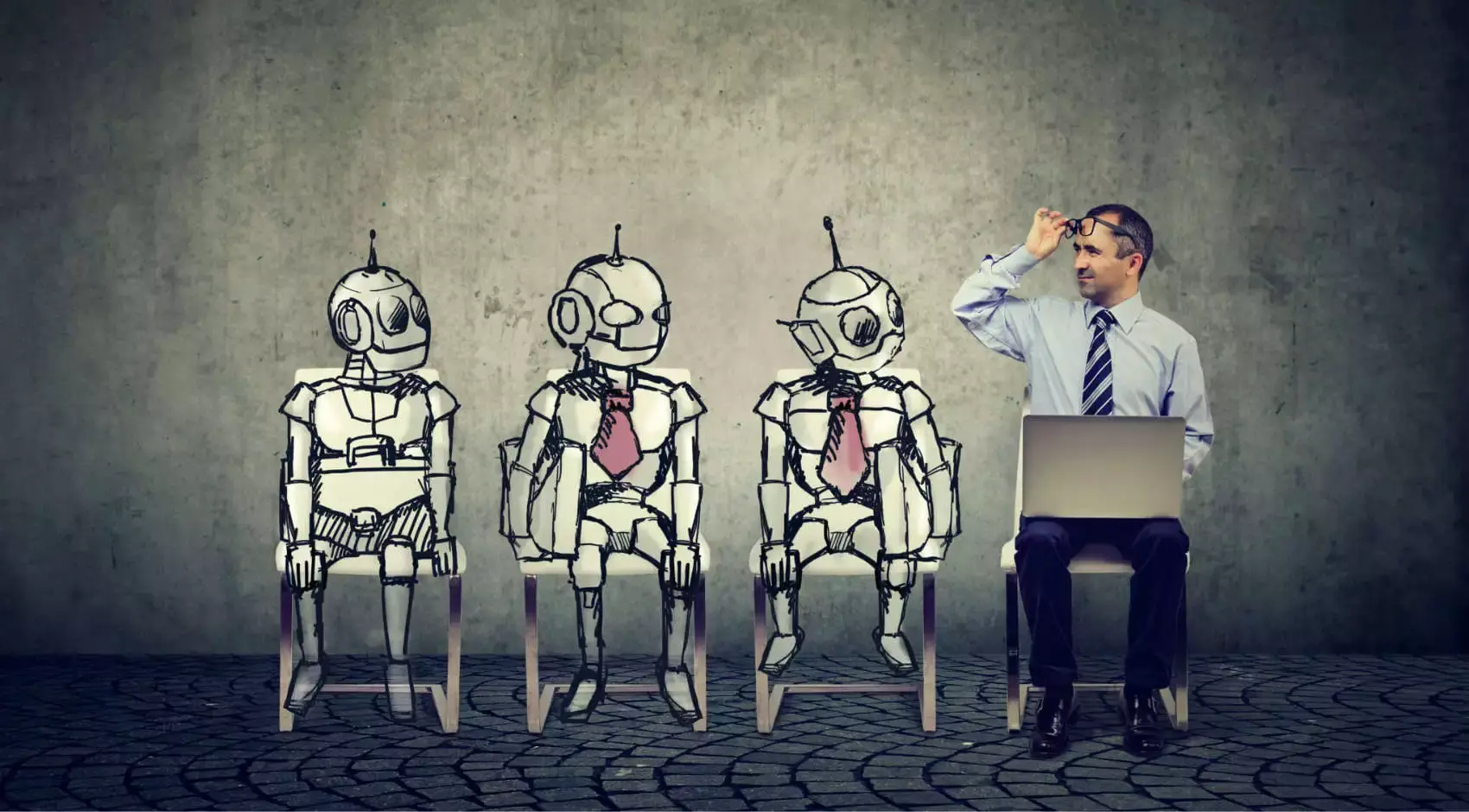AI search is ripping up the rulebook, and it’s not waiting for permission.
Gartner predicts that search visits to websites could drop by as much as 25% by February 2026. The reason? The roll-out of AI Overviews, AI Mode, and the growing use of large language models (LLMs) like ChatGPT.
It’s no wonder marketers feel conflicted about the evolution of AI search engines and their role in the marketing funnel.
Since ChatGPT launched almost three years ago, marketers have largely embraced it as a game-changing tool. It helps in everything from day-to-day tasks to mapping out entire strategies. For professionals juggling countless tasks, it has been a welcome addition. With the right prompts and direction, AI can not only boost output, but often enhance quality. Research that would normally take hours can now be completed within minutes.
But with these benefits come some significant concerns. In a digital landscape where tools evolve at a rapid pace, we now have to assess the effectiveness of our toolkit and how it interacts with and adapts to the rise of AI-powered search. This is particularly true for pay-per-click (PPC) advertising, where the goal is to win that all-important click to your website.
The question is: how do we deliver results in a world where clicks are no longer guaranteed?
In this blog, I’ll explore how Google Search Ads may be impacted by the rise of AI and LLMs, and what marketers can do to adapt.

Evolution of Search Ads
Traditionally, Google Ads has dominated search engine advertising through well-planned, keyword-centric, intent-driven campaigns. Advertisers targeted specific keywords relevant to their products or services, and Google’s auction system decided which ad offered the most value to a user’s search query. This was determined by a combination of Quality Score (relevance, expected click-through rate, and landing page experience), bid amount, and ad extensions. Marketers would then refine their campaigns based on performance data to achieve their desired results.
The shift began with the emergence of LLMs such as ChatGPT, which have dramatically changed how people search for information. A Forbes Industry analysis showed organic traffic to sites has fallen between 15% to 64% depending on sector and search type. Instead of carrying out a series of smaller, incremental searches on Google, with each potentially triggering multiple ad impressions, users are now getting instant, comprehensive answers directly from AI. This means they can obtain the information they need without clicking through to a website or seeing a traditional search ad.
In an attempt to counter the competition, Google announced in May 2023 the launch of its Search Generative Experience (SGE), an upgraded search experience. SGE integrates AI directly into search results, giving users a concise overview of their query by drawing from multiple reputable sources and applying machine learning and deep learning models to provide valuable summaries.
SGE, however, effectively occupies the top position in search results, pushing PPC ads further down the page. According to Search Engine Land, no ads appeared in 27.2% of searches alongside the SGE snippet. This presents two major challenges: securing visibility is harder, and competition for the limited above-the-fold ad space intensifies, which will potentially result in driving up cost-per-click, forcing advertisers to rethink bidding strategies, formats, and campaign success metrics in an AI-dominated search environment.
How Google Ads Adapt in AI Search
Google Ads haven’t disappeared. They are evolving and integrating differently into the user journey. Ads are now displayed within AI Overviews as contextual suggestions alongside AI-generated summaries. These are pulled from existing search campaigns, so advertisers don’t need to create new formats. Early tests have shown these ads appearing both above and below AI content, with placement determined by relevance and bidding signals.

Strategic Shifts for Advertisers in the Age of AI Search
The integration of AI Overviews into Google Search changes not just where ads appear, but how advertisers need to think about campaigns. Success will no longer come from purely optimising for keywords, but will depend on how well your brand, creative, and targeting align with AI’s contextual judgement of relevance.
1. Prioritise Commercial & Transactional Intent
Informational queries are increasingly answered in full by AI without clicks, as Semrush notes that 88% of searches triggering AI overviews are informational ‘what is’, ‘who is’ searches. Commercial and transactional searches; “buy now” moments remain highly valuable. These queries often bypass conversational AI answers and retain higher click potential. For example, a search for “best running shoes for flat feet” may trigger an AI overview, but “buy Nike Air Force size 9” is still likely to show strong product ads. Align budgets and bids to favour these high-intent terms while maintaining coverage for awareness-building searches that feed the funnel.
2. Creative Assets Are Now a Visibility Lever
AI Overviews give visual prominence to ads with strong, relevant imagery. This makes image extensions, product photos, and even video snippets critical for capturing user attention. An ad with compelling visuals, like a product in context or a branded lifestyle image, stands a better chance of being surfaced as a contextual suggestion. Consider running A/B tests with different creative formats to identify which images are most often served in AI placements.
3. Optimise for Audience Signals, Not Just Keywords
With AI deciding placement, keyword management loses some weight. Instead, focus on feeding Google’s systems with rich audience data, including Customer lists, remarketing segments, etc. This ensures your ads are eligible when AI determines contextual relevance, regardless of the exact keyword match.
4. Build Authority Before the Search Happens
If AI provides the answer before a user clicks, brand familiarity becomes critical. Invest in upper-funnel campaigns to ensure your brand is recognisable when it appears in an AI-generated summary. For example, if your company name appears alongside competitors in an AI overview, prior exposure can tip the decision in your favour, even without a click. Think Apple.
5. Adopt Full-Funnel Thinking
The traditional search funnel of awareness, consideration, and conversion is becoming compressed. AI can skip straight from question to answer, meaning fewer opportunities to capture a user mid-journey. Mitigate this by creating multi-touchpoint experiences:
- Awareness: Video campaigns, influencer partnerships, PR.
- Consideration: Branded search ads, product comparison content, and email nurture.
- Conversion: High-intent PPC, shopping campaigns, dynamic remarketing.
Track beyond last-click conversions and monitor brand lift, view-through conversions, and assisted conversions to measure influence.
6. Experiment
The AI search environment is still evolving. Early movers will have an advantage by testing ad formats, placements, and creative strategies before competitors fully adapt. Use Performance Max to test cross-channel performance in AI-heavy SERPs, but maintain manual search campaigns for high-value terms where control is essential. Automation is not the enemy here, with industry leaders PPC Mastery claiming modern-day search campaigns consisting of consolidation, broad match, smart bidding and responsive search ads can be a huge lever for success if implemented correctly.
What You Can Do as a PPC Marketer
- Audit Campaigns: Review active campaigns with AI Overview in mind, prioritising visually appealing creatives.
- Leverage AI Tools: Use AI to optimise ad copy and creative assets.
- Monitor KPIs with a Hybrid Approach: Maintain manual oversight alongside automated bidding and optimisation, adjusting when needed.

Think Beyond The Click
AI-powered search is here to stay, representing the biggest shift in digital advertising in years. The old model (bidding on keywords and driving traffic via clicks) is being rewritten. AI-generated answers now sit at the top of the page, compressing both paid and organic listings and forcing a rethink of the PPC funnel.
But this isn’t the end for Google Ads, more so, it’s a transformation. Ads are still present, integrated into AI experiences and driven more by intent signals than traditional keyword targeting. The brands that thrive will be those that think beyond the click, combining PPC with organic strategies, optimising for AI search, and embracing automation without losing human strategic oversight.
The real question is no longer whether AI will shape Google Ads, but whether your strategy will be ready when it does.
Want to work with a forward-thinking agency that understands AI’s impact on Google Ads? Reach out to Friday and let’s shape what’s next, together.


